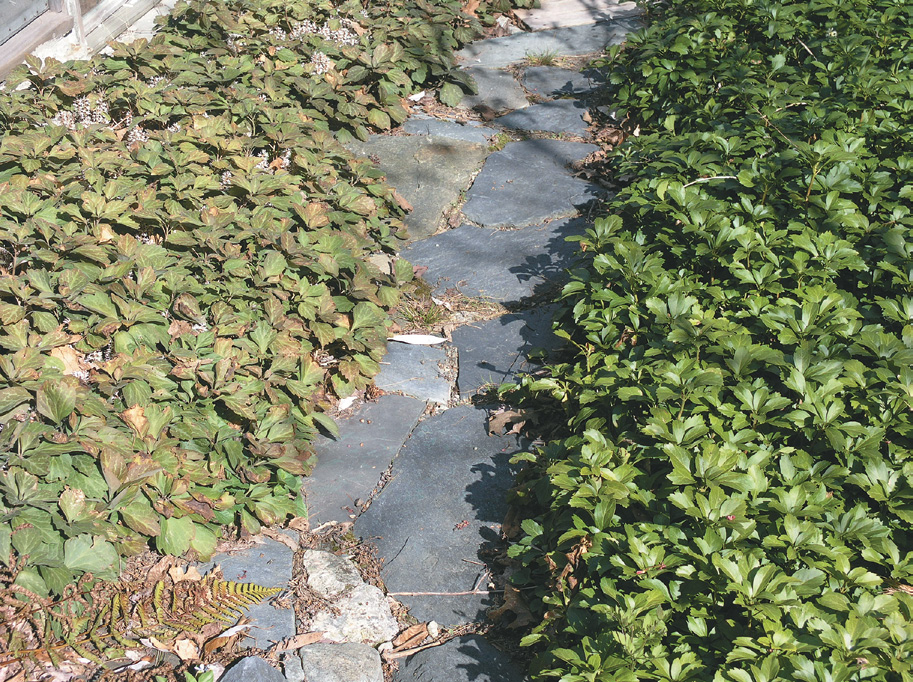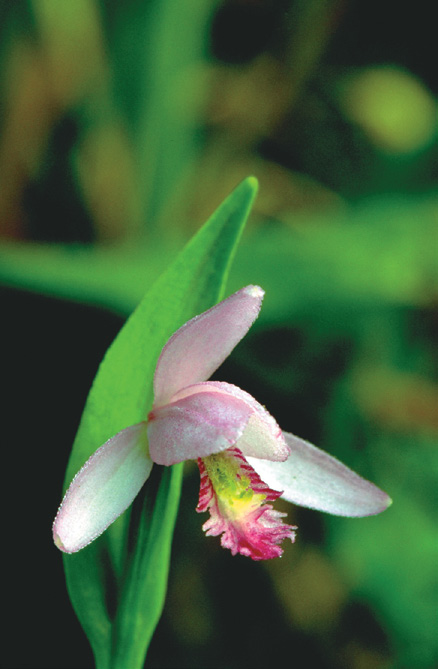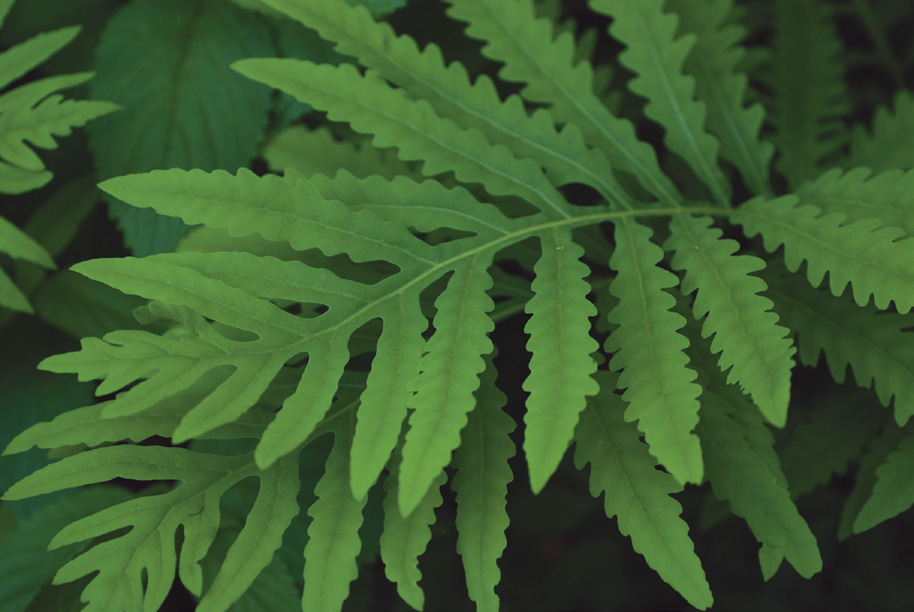The eastern Asian–eastern North American floristic disjunction is a curious phenomenon that has fascinated botanists for over 200 years: the existence of an entire catalog of species and genera shared by two vastly separated regions and found nowhere else. It has inspired generations of researchers and given impetus to such fields as biogeography and paleobotany. Scientists now recognize many different disjunct patterns around the world, but the eastern Asian–eastern North American was the first to be discovered, and remains the classic disjunction. It continues to stimulate new scientific papers, with each successive generation applying new research tools to its mysteries.

Recognition of the disjunction began in the 1750s with botanists making lists of species found in both regions. By the mid-1800s botanists had collected enough materials to lead them to the astounding conclusion that the flora of eastern North America (ENA) had more in common with eastern Asia (EA) than it did with western North America. Most of what were once thought to be identical species are now considered congeners (distinct species belonging to the same genus), so the disjunction is more about shared genera than shared species, and it is now clear that eastern North America has more in common with western North America than with eastern Asia. However, it is also clear that eastern Asia and eastern North America have more in common than eastern Asia and western North America and that a remarkable disjunction phenomenon exists. Today, the list of EA-ENA botanical “disjuncts” (shared taxa peculiar to the two regions) includes about 65 genera, a handful of closely related genera, and a few species (Wen 1999).
Most of the genera are temperate; only a few come from subtropical or tropical zones. And most disjuncts are woody plants. Many of the herbaceous ones are early-leafing species adapted to thrive on the forest floor. Some EA-ENA disjunct genera that have familiar representative species in the Northeast are listed in Table 1 (Li 1952), along with generalized common names for the species.
Disjunct Regions
The majority of eastern Asian disjuncts grow in the Sino-Japanese Floristic Region, which extends from China’s western Yunnan and Sichuan provinces through central, eastern, and most of southern China to Korea and Japan. The richest association of disjunct genera occurs in central China, along the longest river in Asia: the Yangtze (Li 1952). On the American side, the richest disjunct area is along the Appalachian Mountains. The two areas are the only instances globally of the mixed mesophytic forest, one of the most biodiverse temperate forest types in the world.
Western botanists have reported experiencing a sense of déjà vu in the forests of China. Add to the disjuncts the more wide-ranging species that also occur in both regions, and the level of similarity becomes quite high. A recent study found that 67% of the seed plant genera in Maine occur on Japan’s Honshu Island (Qian 2002). The similarity was even greater in ages past. Several genera that are now endemic to eastern Asia occur in fossil form in North America, e.g., the familiar Ginkgo and Metasequoia (dawn redwood), while fossil remains of Sequoia (redwood) and Taxodium (baldcypress), genera now confined to North America, have been found in eastern Asia.

At present, the similarity is limited by pronounced differences in biodiversity. Disjunct genera tend to have more species in Asia than in America. The extreme example is Lindera, with 80 species in eastern Asia but only 2 in North America. Indeed, eastern Asia, with its 2,753 genera of seed plants, has a biodiversity far greater than that of eastern North America, which has only 1,230. According to one explanation, the Paleocene forests of both regions were equally rich in species until severe climatic fluctuations in North America resulted in many extinctions. Another possibility is that the complex topography of eastern Asia promoted a greater rate of speciation there due to the abundance of varied habitats and natural barriers that could allow different populations of a species to evolve separately (Sargent 1913; Qian and Ricklefs 2000). The EA–ENA disjunction is now recognized not only among plants, but among taxa of fungi, arachnids, millipedes, insects, and freshwater fish, as well (Wen 1999). But botanists can take credit for being the first to notice and document the phenomenon.
A Theory Blooms
The earliest hint came in the 1750 dissertation of Halenius, a student of Linnaeus. It mentions nine species found both on Siberia’s Kamchatka peninsula and in North America, including members of genera familiar to New England botanists: Asplenium, Lycopodium, Anemone, Heuchera, and Spirea. Commercial exploitation of the phenomenon had already begun. Père Lafitau, a French Jesuit, had discovered American ginseng (Panax quinquefolius) growing near Montreal in 1716, and French Canadians were neglecting their farms in the rush to collect wild ginseng for export to China (Kingsford 1888). In 1784, C. P. Thunberg, a Swedish botanist, included in his Flora Japonica twenty species first described for North America (Boufford and Spongberg 1983). The following year, the Italian botanist Luigi Castiglioni began a two-year sojourn in the United States. Castiglioni’s mission was to bring back useful seeds to Italy, and he is credited with introducing to continental Europe such trees as black locust (later to show invasive tendencies), catalpa, and arborvitae. In 1790 he published his Viaggio negli Stati Uniti dell’ America, with elegant botanical drawings of such American sights as the franklintree, already rare in the wild and soon to be extinct outside of cultivation. It also contains the first explicit discussion of the floristic similarity of eastern North America to Japan, the only part of eastern Asia for which published floras were then available. Overlooked by nearly all who would later treat the disjunction, he received scant credit for his role in its discovery (Li 1955). Brief comments in the work of Pursh and then Nuttall reveal little beyond an incipient recognition of the disjunction, though Nuttall undertook to note the geographical distributions of North American genera. It remained for Asa Gray, the preeminent American botanist of the nineteenth century, to focus attention on the disjunction, bringing it to the notice of the wider scientific community in a series of articles beginning in 1840 and spanning nearly 40 years.
Charles Darwin, who began an extensive correspondence with Gray in 1855, encouraged him to study the global distributions of the North American flora. In his second letter to Gray he wrote, “The ranges of plants, to the east and west, viz. whether most are found in Greenland and Western Europe, or in E. Asia appears to me a very interesting point as tending to show whether the migration has been eastward or westward” (Darwin 1855). In 1859, after studying new collections from Japan, Gray published his classic “Diagnostic Characters” paper that included a list of 134 species shared by eastern North America and Japan. On the list were such northeastern plants as blue cohosh (Caulophyllum thalictroides), fox grape (Vitis labrusca), ditch stonecrop (Penthorum sedoides), honewort (Cryptotaenia canadensis), hobblebush (Viburnum lantanoides), wild ginger (Asarum canadense), red trillium (Trillium erectum), large twayblade (Liparis liliifolia), and rose pogonia (Pogonia ophioglossoides). All were later shown to be distinct from their Asian counterparts—belonging to the same disjunct genus, but different species. The two ferns on Gray’s list, sensitive fern (Onoclea sensibilis) and cinnamon fern (Osmunda cinnamomea), turned out to be too widespread globally to qualify as disjunct species (Li 1952). In addition to comparing the flora of Japan to various other regions, Gray’s “Diagnostic Characters” contains an extended discussion of the EA-ENA disjunction. “It will be almost impossible to avoid the conclusion,” he writes, “that there has been a peculiar intermingling of the eastern American and eastern Asian floras which demands explanation” (Gray 1859). It was the eve of the appearance of Darwin’s Origin of Species, during a ferment of interest in the natural world, and there was no shortage of theories on such topics. “Schouw’s hypothesis” held that there had been multiple geographic origins of many species. At a time when naturalists were struggling to reconcile scientific rigor with cherished beliefs, Gray was also conversant with such hybrid approaches as Maupertius’s “principle of least action,” according to which it was “inconsistent with our idea of Divine wisdom that the Creator should use more power than was necessary to accomplish a given end” (quoted in Gray 1859). By applying this principle, one could argue (without sacrificing piety) that once created, the far-flung species had migrated on their own, rather than requiring further divine intervention. With characteristic grace, Gray gave dispassionate consideration to all points of view. J. D. Hooker, the prominent British botanist and a close friend of Darwin, had recently proposed, in relation to southern-hemisphere taxa, “the hypothesis of all being members of a once more extensive flora, which has broken up by geological and climatic causes” (quoted in Boufford and Spongberg 1983). In the end, Gray applied a similar hypothesis to the Asian and American floras. With various refinements, it remains in effect to this day.

The Ongoing Puzzle
With the general adoption of cladistics in the latter part of the twentieth century and rapid advances in molecular genetics, new tools have emerged for studying the disjunction. Most scientific papers from the last twenty years use molecular data and focus on a single disjunct genus. There are several sorts of molecular-level data to choose from (the most popular has been ITS—short for sequences of internal transcribed spacer regions of nuclear ribosomal DNA). Though their relative merits are still being assessed, the information they yield pertains not only to phylogeny (how disjuncts are related in terms of evolutionary descent), but also to dating divergence times and inferring pathways and directions of migration. Often the genetic analyses match nicely with the prior work of traditional taxonomists. The genus Sassafras, for example, is monophyletic. That is, its three species constitute a clade. The eastern North American S. albidum is “sister” to the smaller clade made up of its two eastern Asian counterparts. Molecular data subjected to statistical methods put their intercontinental divergence time at around 15 million years ago (Nie et al. 2007). Sassafras also illustrates several frequent patterns; diversification in one or both continents following the time of separation is common, and disjunct genera tend to have more eastern Asian than American representatives.

The upshot of all the investigations into geology, the fossil record, climate studies, taxonomy, and the molecular clocks and phylogenetic analysis of modern genetics is still a necessarily tentative picture of the disjunction’s history. But there is agreement on the broad outlines. Most scientists do not consider long-distance dispersal to have played much of a role. The prevailing view is that most disjuncts are remnants of genera that were once widely distributed in the northern temperate zone during the Tertiary period. These broad distributions in the northern hemisphere were made possible by recurring land bridges. Bering land bridges connecting Asia to North America were present at several times since the Mesozoic era. North Atlantic land bridges connected North America to Europe via Greenland beginning in the early Tertiary, and by the mid-Tertiary, Europe and Asia were connected by a land bridge along the Tethys Seaway. After the establishment of the northern Tertiary flora, the formation of the Rocky Mountains brought profound changes in climate and rainfall patterns, causing the genera to disappear from western North America during the late Tertiary and Quaternary. During the Quaternary glaciations, they were also extirpated from Western Europe.
Citation: Yih, D. 2012. Land bridge travelers of the tertiary: The Eastern Asian–Eastern North American floristic disjunction. Arnoldia, 69(3): 14–23.
Drawing on fossil, geologic, and climatic evidence, B. H. Tiffney proposed five different time periods during which migrations over the land bridges may have occurred between the two regions (pre-Tertiary, early Eocene, late Eocene-Oligocene, Miocene, and late Tertiary to Quaternary), with different types of plants featured in each migration (Tiffney 1985). A multiple-origins view is also supported by molecular evidence. Molecular clock data from Cornus, Boykinia, and Calycanthus suggest that the disjunction could have involved multiple events at different geological times in different genera (Xiang et al. 1998).
Ultimately, the EA-ENA disjunction is part of a broader picture that will occupy biogeographers for years to come. Studies of northern hemisphere intercontinental disjuncts point to complex biogeographical relationships among taxa in five major regions, including not only eastern Asia, eastern North America, and western North America, but western Asia and southeastern Europe as well. Darwin’s desire to determine whether migration happened “eastward or westward” has grown into a multifaceted field of study.
Cited Works
Boufford, D. E. and S. A. Spongberg. 1983. Eastern Asian– Eastern North American Phytogeographical Relationships—A History from the Time of Linnaeus to the Twentieth Century. Annals of the Missouri Botanical Garden 70: 423–439.
Darwin, Charles. 1855. Letter to Asa Gray, June 8. In Francis Darwin, ed. The Life and Letters of Charles Darwin, vol. 2. 1959. New York: Basic Books.
Gray, Asa. 1859. Diagnostic Characters of New Species of Phænogamous Plants … Memoirs of the American Academy of Arts and Sciences, New Series 6(2).
Kingsford, William. 1888. The History of Canada. London: Trübner & Co.
Li, Hui-Lin. 1952. Floristic Relationships between Eastern Asia and Eastern North America. Transactions of the American Philosophical Society 42(2): 371–429.
Li, Hui-Lin. 1955. Luigi Castiglioni as a Pioneer in Plant Geography and Plant Introduction. Proceedings of the American Philosophical Society 99(2): 51–56.
Nie, Z.-L., J. Wen, and H. Sun. 2007. Phylogeny and biogeography of Sassafras (Lauraceae) disjunct between eastern Asia and eastern North America. Plant Systematics and Evolution 267: 191–203.
Qian, Hong. 2002. Floristic Relationships between Eastern Asia and North America: Test of Gray’s Hypothesis. The American Naturalist 160(3): 317–332.
Qian, Hong and Robert E. Ricklefs. 2000. Large-scale processes and the Asian bias in species diversity of temperate plants. Nature 407(6801): 180–182.
Sargent, Charles S. 1913. Introduction to E. H. Wilson’s A Naturalist in Western China. New York: Doubleday, Page & Co.
Tiffney, B. H. 1985. Perspectives on the origin of the floristic similarity between eastern Asia and east North America. Journal of the Arnold Arboretum 66: 73–94
Wen, Jun. 1999. Evolution of Eastern Asian and Eastern North American Disjunct Distributions in Flowering Plants. Annual Review of Ecology and Systematics 30: 421–455.
Xiang, Qiu-Yun, Douglas E. Soltis, , and Pamela S. Soltis. 1998. The eastern Asian and eastern and western North American floristic disjunction: Congruent phylogenetic patterns in seven diverse genera. Molecular Phylogenetics & Evolution. 10(2): 178–190.
David Yih, Ph.D., is a musician, writer, and naturalist.
From “free” to “friend”…
Established in 1911 as the Bulletin of Popular Information, Arnoldia has long been a definitive forum for conversations about temperate woody plants and their landscapes. In 2022, we rolled out a new vision for the magazine as a vigorous forum for tales of plant exploration, behind-the-scenes glimpses of botanical research, and deep dives into the history of gardens, landscapes, and science. The new Arnoldia includes poetry, visual art, and literary essays, following the human imagination wherever it entangles with trees.
It takes resources to gather and nurture these new voices, and we depend on the support of our member-subscribers to make it possible. But membership means more: by becoming a member of the Arnold Arboretum, you help to keep our collection vibrant and our research and educational mission active. Through the pages of Arnoldia, you can take part in the life of this free-to-all landscape whether you live next door or an ocean away.














